By Abiola Gbolahan
Edited By Fredrick Oladipupo
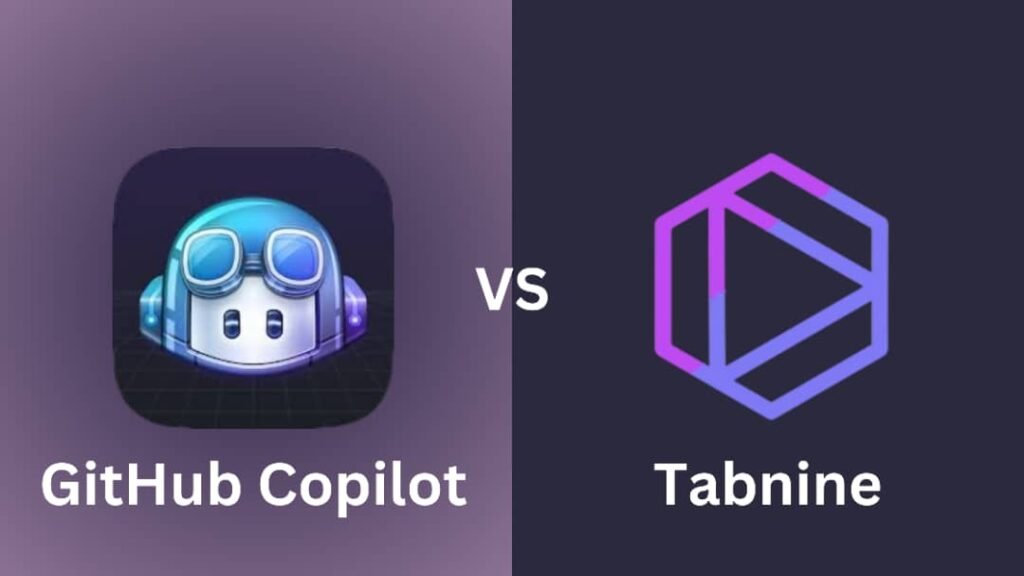
Table of Contents
1. Introduction
AI tools are changing the way developers write code, making the entire process faster and easier. Among these tools, Similar to coding assistants, AI coding assistants have become game-changers by helping developers boost productivity and focus on what matters most—building great software.
When it comes to AI coding assistants, GitHub Copilot vs Tabnine are two of the top contenders. While GitHub Copilot offers smart, context-aware code suggestions, Tabnine focuses on providing predictive coding assistance tailored to your style.
In this blog, we’ll compare GitHub Copilot vs Tabnine in detail to help you decide which one is the best fit for your development needs.
2. What Are GitHub Copilot and Tabnine?
GitHub Copilot and Tabnine are two of the most popular AI-powered coding assistants, designed to make software development faster and more efficient. While both aim to enhance productivity, they take different approaches to supporting developers.
2.1 GitHub Copilot Overview
GitHub Copilot, developed by GitHub in collaboration with OpenAI, is an AI-powered coding assistant designed to help developers write code faster and more efficiently. It leverages machine learning to provide smart, context-aware code suggestions based on the programmer’s input, making it ideal for handling complex tasks and improving workflow.
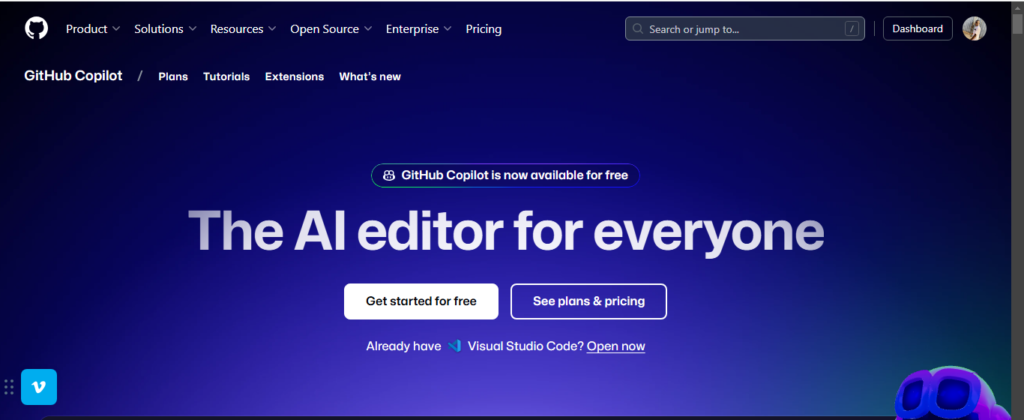
Copilot introduces an innovative way to generate code by seamlessly blending into a developer’s workflow. It provides suggestions for code completions, entire functions, code blocks, and even offers explanations and tutorials. Copilot supports integration with IDEs such as Visual Studio Code, Visual Studio, Vim, Neovim, JetBrains IDEs, and Azure Data Studio as of the time of writing thois blog.
2.2 Tabnine Overview
Tabnine, on the other hand, is an AI tool built to focus on predictive coding. Unlike GitHub Copilot, it emphasizes lightweight, real-time code completion and adapts to individual coding styles. Tabnine can run locally, ensuring better privacy and security, making it particularly appealing for developers working on proprietary projects.
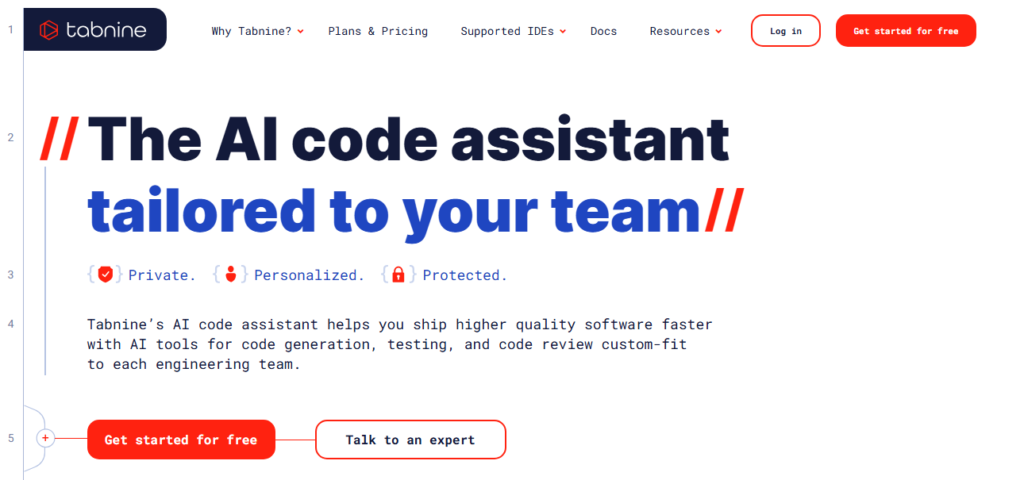
Tabnine uses its own special AI model trained on carefully selected code from reliable sources. The code it’s trained on follows strong security rules and open-source licenses, making its suggestions safer and a good fit for businesses. You can also use Tabnine with many different coding tools (IDEs), which makes it a handy option for developers no matter what they’re working on.
3. Key Features Comparison
| Feature | GitHub Copilot | Tabnine |
|---|---|---|
| Code Suggestions | Offers code completions, entire functions, and code blocks based on context. | Provides personalized code completions, adapting to the user’s coding style. |
| Languages Supported | Supports a wide range of languages including Python, JavaScript, Java, and more. | Supports many languages, including Python, JavaScript, Go, and others. |
| Contextual Understanding | Strong contextual understanding, offering code suggestions based on the surrounding code. | Predictive coding based on individual user patterns, with less focus on broader context. |
| Integration and Compatibility | Integrates with Visual Studio Code, Visual Studio, Vim, Neovim, JetBrains IDEs, and Azure Data Studio. | Integrates with multiple IDEs like VS Code, IntelliJ, Atom, Sublime Text, and more. |
| Learning and Customization | Adapts over time by learning from code patterns but with a steeper learning curve. | Learns from user-specific coding patterns, offering more immediate customization. |
4. Performance and Accuracy
When it comes to GitHub Copilot vs Tabnine, both tools offer strong performance, but their approaches to accuracy can vary based on use cases. GitHub Copilot shines in its ability to generate entire functions or even entire code blocks with impressive accuracy.
It’s particularly effective for developers working on diverse projects and looking for suggestions that fit naturally within the context of their code. Its deep contextual understanding allows it to handle complex coding tasks with ease, especially in languages like Python, JavaScript, and TypeScript. For large-scale projects, Copilot can help by suggesting large snippets of code and even handling more abstract tasks like testing or documentation generation.
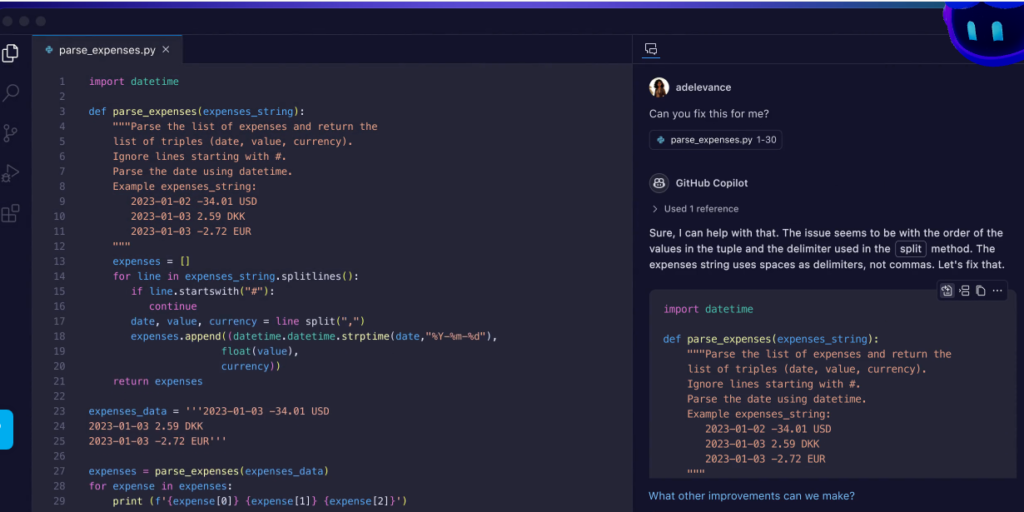
On the other hand, Tabnine excels in more personalized code completions. It’s designed to adapt to your unique coding style over time, making it especially useful for developers working on long-term projects. While it doesn’t always provide as large a context for its suggestions as Copilot, it makes up for this by being highly responsive to individual coding habits, providing more accurate suggestions for developers who work consistently in the same programming languages. Tabnine also handles large projects well but shines when it comes to integrating smoothly with the developer’s workflow.
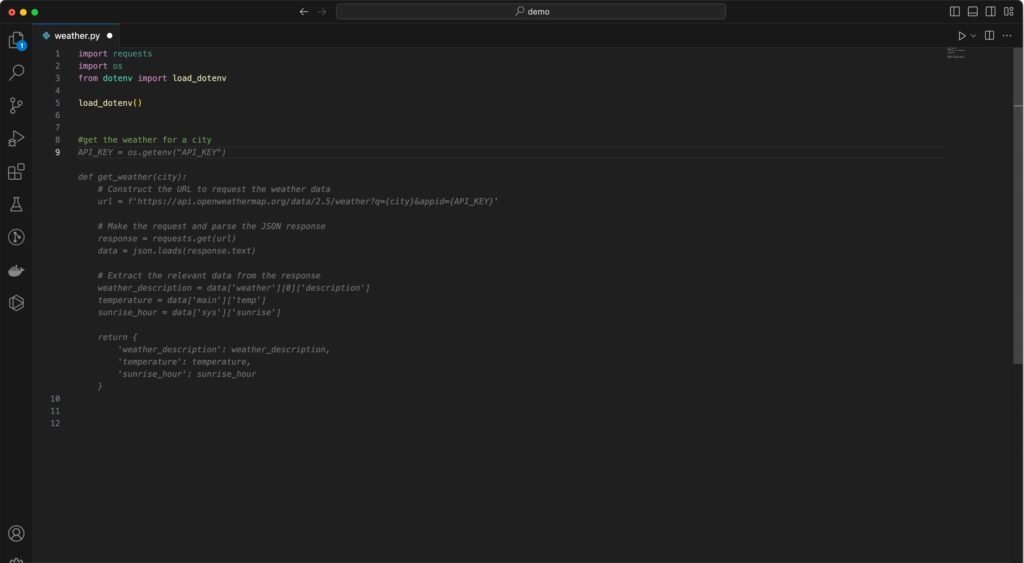
4.1 Real World Scenerio
In real-world scenarios, GitHub Copilot vs Tabnine both have their strengths. For instance, if you’re a developer working on open-source projects or experimenting with new code, GitHub Copilot is a great tool due to its vast range of suggestions. However, if you’re working on a more private or security-sensitive project, Tabnine’s ability to run locally and its focus on predictive, personalized completions can offer a better experience, especially when working in environments that require tight control over data.
5. Ease of Use and Setup
When it comes to GitHub Copilot vs Tabnine, both tools are fairly easy to set up, but there are some differences in the installation process and user experience.
5.1 GitHub Copilot
Github Copilot is relatively simple to install, especially if you’re already using Visual Studio Code, which is one of its primary integrations. Once installed, you’ll need to sign in with your GitHub account and follow a quick setup guide. The user interface is clean and seamlessly integrates into your code editor, offering code suggestions as you type. The setup is straightforward for most IDEs, though the process may require a little more effort if you’re using less common editors like Vim or Neovim.
5.2 Tabnine
Tabnine also boasts an easy setup, with support for a wide range of IDEs. Once you’ve downloaded the plugin for your preferred editor, you can start using it right away. The setup process is quick and doesn’t require much configuration unless you choose to fine-tune the AI’s behavior. Tabnine’s interface is also user-friendly, focusing on minimal distractions while providing code completions as you work. It doesn’t overwhelm you with too many features, which makes it particularly appealing for developers who prefer a more streamlined experience.
5.3 Learning Curve for New Users
In terms of learning curve, GitHub Copilot vs Tabnine both offer accessible experiences, but GitHub Copilot may take a bit longer to master due to its deeper functionality and more advanced code suggestions. New users might feel a little overwhelmed by the volume and complexity of the suggestions Copilot provides. On the other hand, Tabnine has a shorter learning curve, especially if you’re already familiar with how code completion works. Since Tabnine focuses more on predictive typing and is designed to adapt to your style over time, it can be easier for new users to start using without needing much guidance.
6. Privacy and Security
When comparing GitHub Copilot vs Tabnine, privacy and security are important factors to consider, especially for developers working on sensitive projects. GitHub Copilot is cloud-based, which means that your code and data are processed through GitHub’s servers. While it has measures in place to ensure that your code is not shared publicly, developers working on highly confidential or proprietary code might feel uncomfortable with this cloud processing. GitHub Copilot doesn’t store your code in a way that would expose it to the public, but if you’re dealing with sensitive intellectual property, you might be cautious about sending code to the cloud.
In contrast, Tabnine takes a more privacy-conscious approach by offering local models. This means that Tabnine can run entirely on your machine, ensuring that your code remains private and doesn’t need to be sent to any external servers. This makes Tabnine an appealing option for developers working on proprietary code or in industries where data security is a priority. You have more control over your environment, and sensitive code stays local, reducing the risk of data exposure.
6.1 Key Concerns for Developers
For developers working on proprietary or confidential projects, GitHub Copilot vs Tabnine presents a clear choice in terms of privacy. GitHub Copilot is better suited for those who don’t mind the cloud-based approach, while Tabnine provides a more secure and private option with its local models. If security is your top priority, Tabnine’s local setup gives you peace of mind knowing your code isn’t leaving your machine.
7. Pricing and Plan
GitHub Copilot provides a 30-day free trial, after which the subscription begins at $10 per user per month. For businesses, Copilot Business offers extra features such as chat support, CLI assistance, and public code filtering, priced at $19 per user per month. If you’re looking for even more advanced features, such as code review and customized models, Copilot Enterprise is available for $39 per user per month.
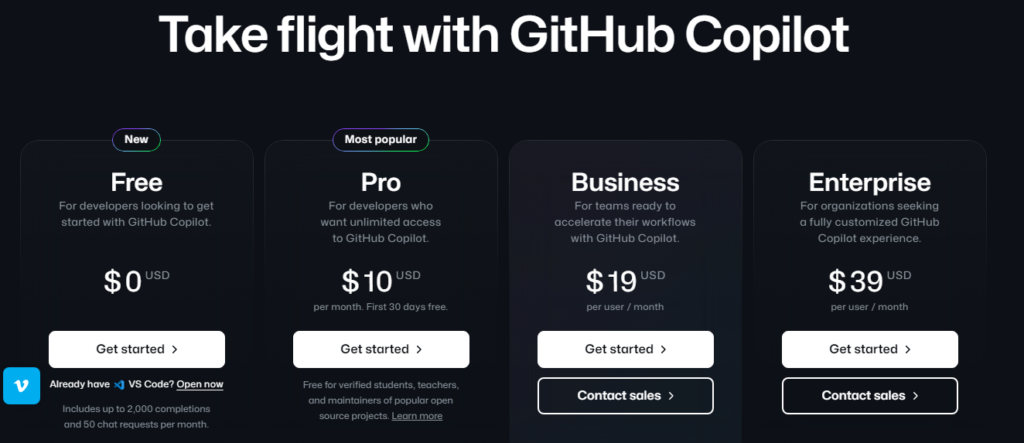
While Tabnine offers a free version that provides short code completions of 2-3 words. To access the full range of AI assistant features, pricing starts at $12 per user per month. For advanced enterprise features such as on-premise deployment, chat support, and custom AI models, you’ll need the Enterprise Edition, but the pricing for that is not publicly available.
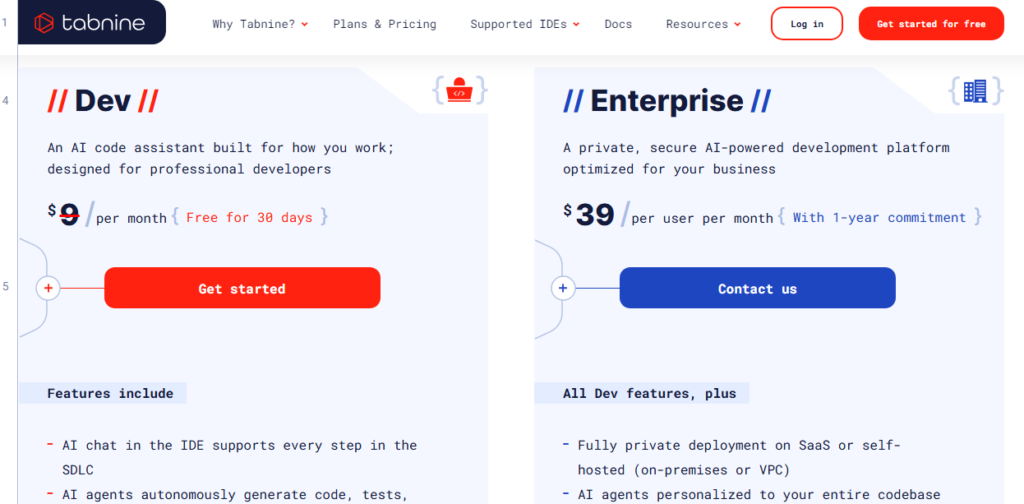
8. Pros and Cons
| Tool | Pros | Cons |
|---|---|---|
| GitHub Copilot | – Provides full code completions, functions, and code blocks. – Strong contextual understanding. – Supports a wide range of languages and IDEs. – Great for open-source and public code. | – Cloud-based, which may raise privacy concerns. – May be overwhelming for new users due to advanced suggestions. – Requires internet connectivity. |
| Tabnine | – Can run locally, ensuring better privacy. – Adapts to individual coding style over time. – Quick and easy setup. – Lightweight and minimal interface. | – Limited code completion length in the free version. – May not have as deep contextual understanding as Copilot. – Fewer integrations than Copilot. |
9. Conclusion: Who Should Use What?
When deciding between GitHub Copilot vs Tabnine, it’s important to choose based on your needs and the type of projects you’re working on. Here are some recommendations to help guide your decision:
9.1 Individual Developers vs. Teams
GitHub Copilot is an excellent choice for individual developers, especially those working on open-source projects or looking to enhance their personal coding workflow. It’s also beneficial for teams that need advanced code suggestions and collaboration tools, especially in environments like GitHub.
Tabnine, on the other hand, is perfect for privacy-conscious developers or those working on smaller, independent projects. It works well for individuals who prefer a simpler setup or for teams that require local models to keep sensitive code within their organization.
9.2 Experience Level
If you’re new to coding, GitHub Copilot might initially feel overwhelming, but its deep contextual suggestions can really speed up your learning process. If you’re getting started with basic projects, it will help you build your code faster.
For experienced developers looking for a coding assistant that can enhance your workflow without being too complex, both GitHub Copilot and Tabnine are solid choices. Copilot’s advanced features might appeal to those looking to deepen their knowledge.
For experienced developers, Tabnine is a great tool if you prefer a more minimal and adaptable assistant that integrates easily into your existing workflow. GitHub Copilot, with its deeper understanding and ability to generate larger code blocks, can be helpful for large-scale or collaborative projects.
9.3 Types of Projects
GitHub Copilot shines in open-source environments where collaboration and integration with GitHub are key. It excels at providing suggestions that fit within public repositories and community-driven coding.
If you’re working on enterprise-level projects where security and privacy are important, Tabnine’s local setup makes it a more suitable choice. It ensures that your code remains private, which is a big plus when dealing with proprietary systems.
Incase of Freelance Projects, Both tools are useful for freelancers, but if your projects are smaller-scale and you want a simple, efficient assistant, Tabnine might be a better option. For larger, more complex freelance projects, GitHub Copilot could help generate entire functions, speeding up your work process.
AI has grown over the past years and there are several tools that can make your work easy; coding assistants, meeting personal not taker, content marketing and generation, SEO generation, writing assitants. You can’t go wrong with a little help from AI.
For more insights, check out my previous blog posts on AI Tools to boost productivity:


